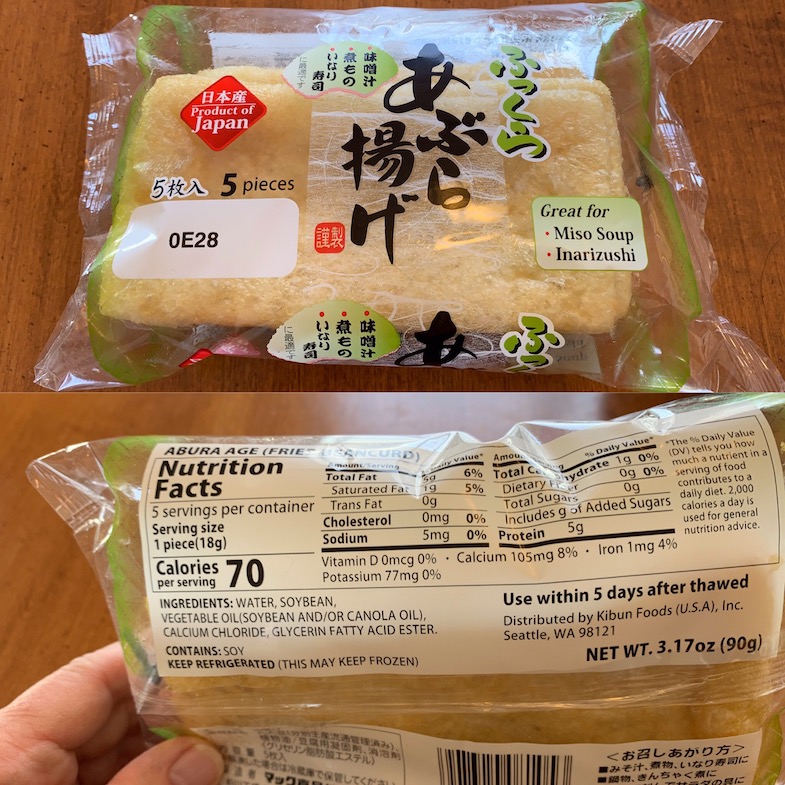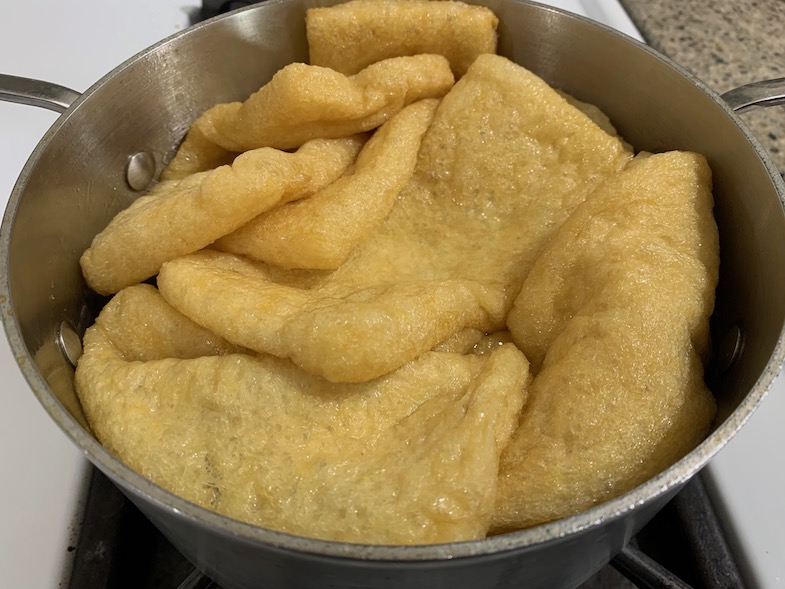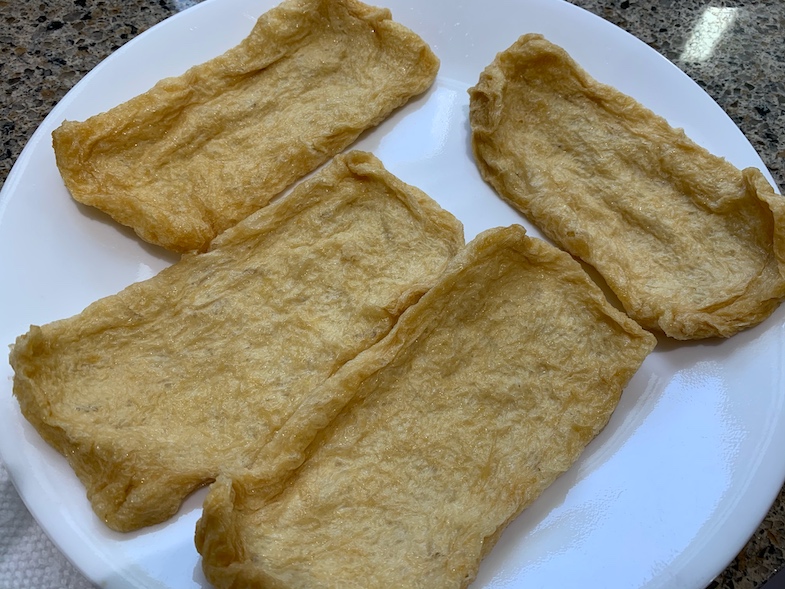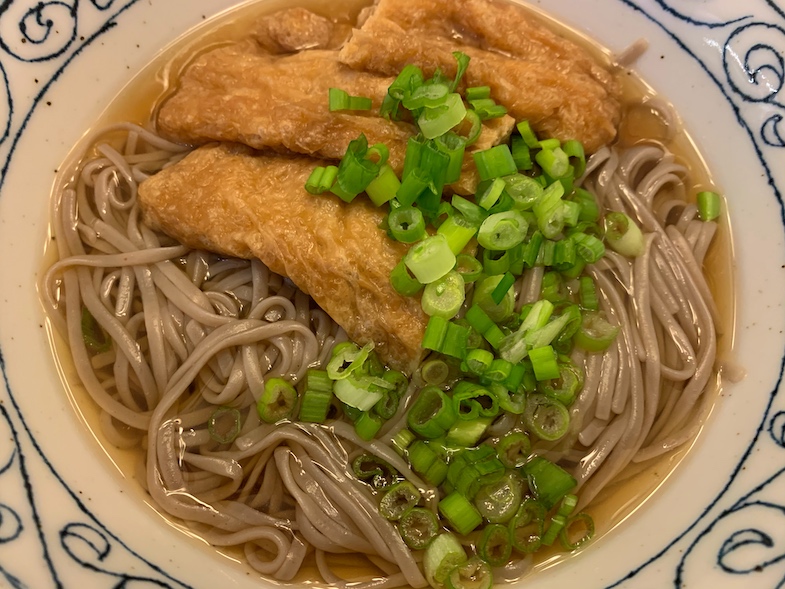Gluten-Free Flavoured Aburaage Recipe (Inariage)
Share
I like aburaage. You can make so many different dishes using it as an ingredient. You can use it as it is, or flavour it by cooking it in a sauce seasoned with dashi, gluten-free soya sauce, mirin and sugar.
Before I was diagnosed with celiac disease I used to buy the pre-seasoned aburaage called inariage in cans or packets. Unfortunately have never seen a gluten-free version, and therefore had to start making my own. It is quite easy.

Now before you cook with the aburaage sheets you will need to get rid of the excess oil. Aburaage also called usu-age is made by deep frying slices of tofu twice. This makes the little pouch or space that is in the middle of the sheets. I did try to make them myself, but so far have not had satisfactory results. Now let's get back to removing the excess oil. Remove the aburaage sheets from the package and blanch them in some boiling water for a few minutes.

After boiling for a few minutes, drain, rinse, gently squeeze out the excess water and pat dry with a paper towel. They are now ready to use. You can use them unseasoned in stir fries, miso soup and cooked with rice. One popular and easy dish is fried hakusai also called Napa cabbage(Japanese/Asian cabbage) with thin slices of the aburaage seasoned with gluten-free soya sauce. My mother-in-law used to make this once a week.

Above are my seasoned aburaage which are called inariage. I like to make ten at a time, cut them in half to make little pouches, and keep in the fridge. They keep for a week, but I have usually used them long before that. They have a lovely sweet and slightly salty flavour.
Gluten-Free Inari-age (Inariage) Sheets
Ingredients
- 10 aburage sheets (Cut in half = 12 pieces)
- 2 cups water
- 1 teaspoon dashi powder
- 3 tablespoons sugar
- 1 tablespoon sake
- 1 tablespoon mirin
- 3 - 4 tablespoons gluten-free soya sauce
Directions
- Prepare the Aburaage sheets by putting them in boiling water for about 2 minutes. Then drain, rinse, gently squeeze out the liquid and pat dry with some paper towel. Cut in half.
- Now making the sauce. Add all your ingredients except the Aburaage sheets and bring to a boil. Once boiling add the Aburaage sheets, and simmer for around 15 minutes until about 90% of the liquid is gone.
- Let cool in the pot and then transfer to your storage container with the remaining sauce.
- The Inariage (seasoned tofu pockets) are ready to be used. You can store them in the fridge for a week.

We often have them with gluten-free soba noodles. This dish is called Kitsune Soba in Japanese. You can also get Kitsune udon in Japan, but this is not gluten-free as udon are wheat noodles. I have not been able to find or make gluten-free udon well yet. I'm working on making gluten-free udon and if I every make a good one I will share the recipe.

Another favourite is inarizushi. I love inarizushi. It is fairly easy to make. You can use just plain seasoned sushi rice or add extra ingredients as I did above. The only difficulty I have is filling the pockets. I tend to overfill with the fillings and tear the inariage. I will post my recipe soon.
They are so many uses for aburaage and inariage. What is your favourite? I recently heard about using the unseasoned sheets as a pizza-like base. As soon as I buy more, I'm going to try it out.
Note: These are my personal experiences and opinions. Always seek out a medical opinion for medical concerns.